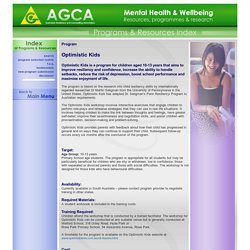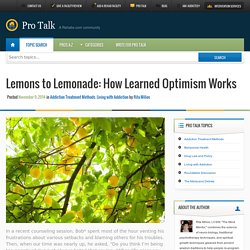

6 Simple Things You Can Do Every Day to Be Consistently Happy. We’re starting a new series on the Buffer blog today with great tips and insights from Joel, CEO here at Buffer.

Joel will share his ideas and insights about lifehacking, building a business and working on company culture. Here is #1: Today it’s a little over three years since I first had the idea for Buffer, and with the year and a half before that which I worked on my previous startup, I’ve started to notice a few patterns amongst the ups and downs that come with building a startup. One of the most important things I’ve learned during this time is that I perform the best when I’m happy. How to Trick Your Brain for Happiness. This month, we feature videos of a Greater Good presentation by Rick Hanson, the best-selling author and trailblazing psychologist.

In this excerpt from his talk, Dr. Hanson explains how we can take advantage of the brain’s natural “plasticity”—it’s ability to change shape over time. gobyg There’s this great line by Ani Tenzin Palmo, an English woman who spent 12 years in a cave in Tibet: “We do not know what a thought is, yet we’re thinking them all the time.” It’s true. In recent years, though, we have started to better understand the neural bases of states like happiness, gratitude, resilience, love, compassion, and so forth. Ultimately, what this can mean is that with proper practice, we can increasingly trick our neural machinery to cultivate positive states of mind. But in order to understand how, you need to understand three important facts about the brain. Fact one: As the brain changes, the mind changes, for better or worse. Fact two: As the mind changes, the brain changes. 7 New Exercises to Boost Happiness. Health and Happiness Exercise - Teaching Clinical Psychology.
Signature strengths & 8 other character strength interventions. 3.7 Learned Helplessness vs. Learned Optimism. Curtin University, Perth, Western Australia. MindMatters Plus: Program Index - Optimistic Kids. Program Optimistic Kids Optimistic Kids is a program for children aged 10-13 years that aims to improve resiliency and confidence, increase the ability to handle setbacks, reduce the risk of depression, boost school performance and maximise enjoyment of life.

The program is based on the research into child resiliency skills by internationally regarded researcher Dr Martin Seligman from the University of Pennsylvania in the United States. Optimistic Kids has adapted Dr. Seligman’s Penn Resiliency Program to Australian requirements. The Optimistic Kids workshop involves interactive exercises that engage children to perform role-plays and rehearse strategies that they can use in real life situations. Optimistic Kids provides parents with feedback about how their child has progressed in general and on ways they can continue to support their child. Target:Age Group: 10-13 yearsPrimary School age students. Required Materials: A student workbook is included in the training costs. Lemons to Lemonade: How Learned Optimism Works. In a recent counseling session, Bob* spent most of the hour venting his frustrations about various setbacks and blaming others for his troubles.

Then, when our time was nearly up, he asked, “Do you think I’m being too negative? I’ve just always hated that saying, ‘When life gives you lemons, make lemonade.’ To me it seems too Pollyannaish. But maybe I could use a little more of that… What do you think?” I’ve just always hated that saying, ‘When life gives you lemons, make lemonade.’ Pleased that Bob had finally turned the conversation toward what he might do to improve his situation, rather than just complaining about, it, I told him that, yes, I did, indeed, think that he could use a little more positivity in his attitude. The way we think and how we talk to ourselves largely dictates how we feel about the circumstances we encounter – whether we perceive ourselves as helpless and hopeless or as confident and capable of success.
Are You an Optimist or a Pessimist? New Ways to Happiness with Strengths. Need a happiness boost?

Discover your signature strengths and use them in a new way each day. Research has found this intervention gives a boost to happiness and a decrease to depression, with some studies finding effects lasting up to six months. Below are examples of how this intervention might be applied with each of the 24 universal, character strengths of the VIA Classification.
I created a Pinterest board that provides images for many of these “new ways,” including at least one image for each strength. Visit it here. After you take the VIA Survey, consider one of the following ideas with one of your signature strengths: 1) Creativity: Think of one of your problems and two possible solutions.